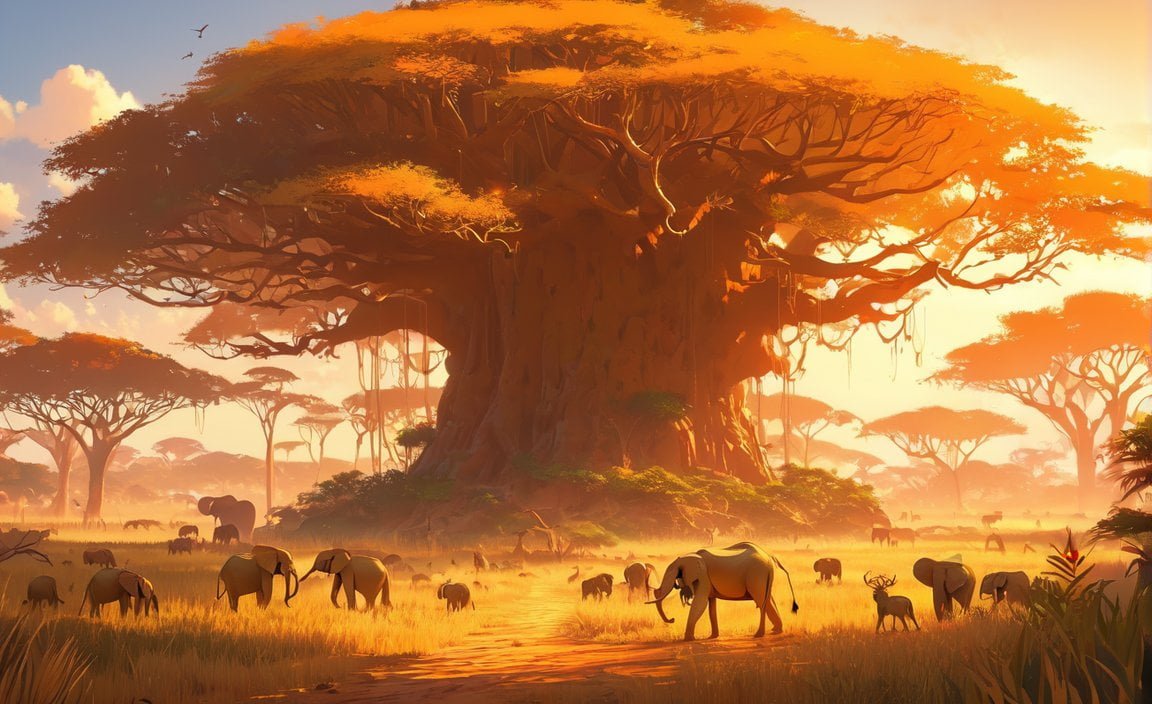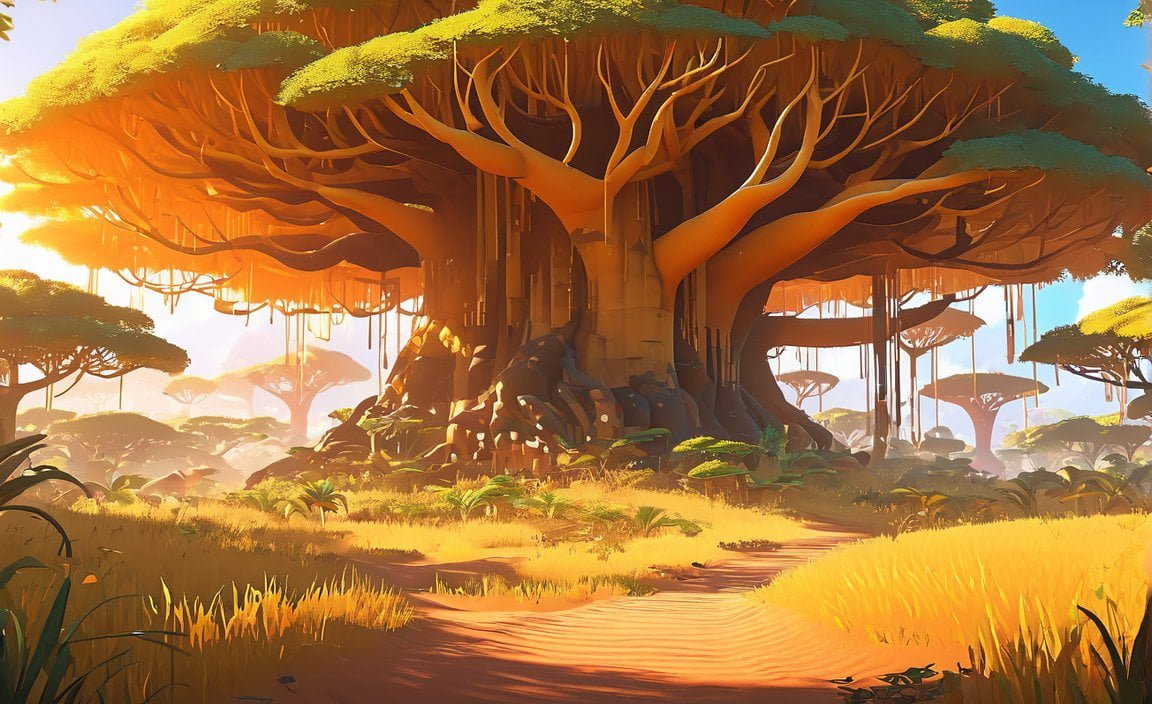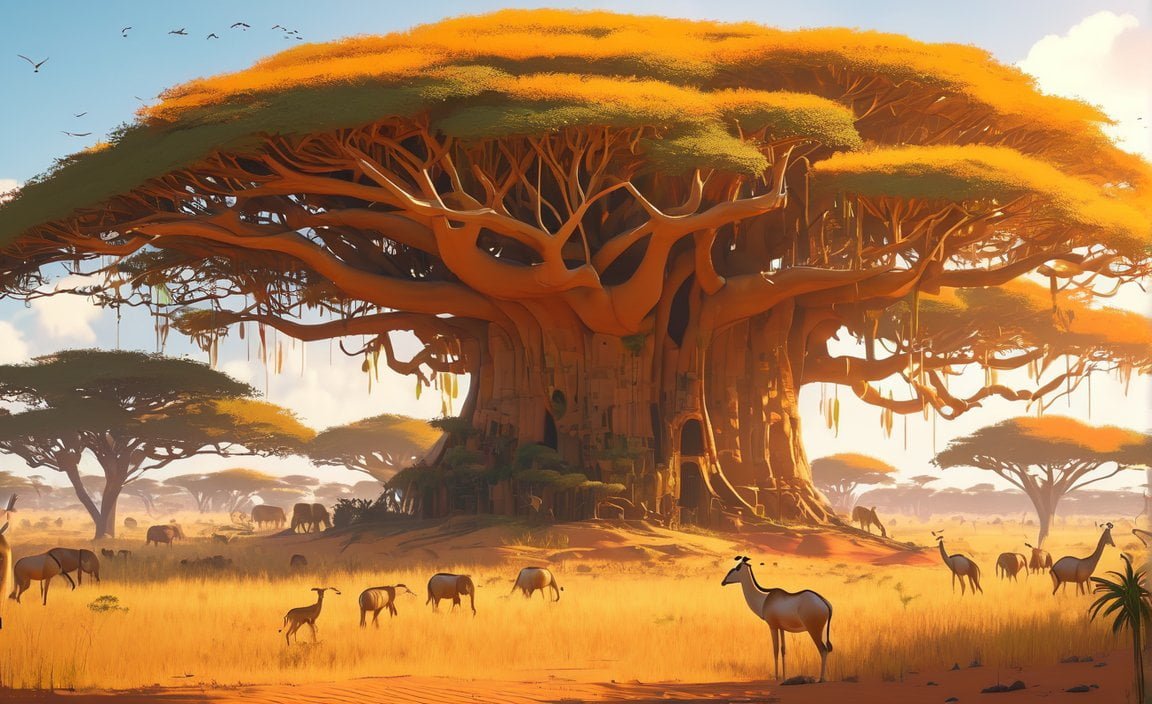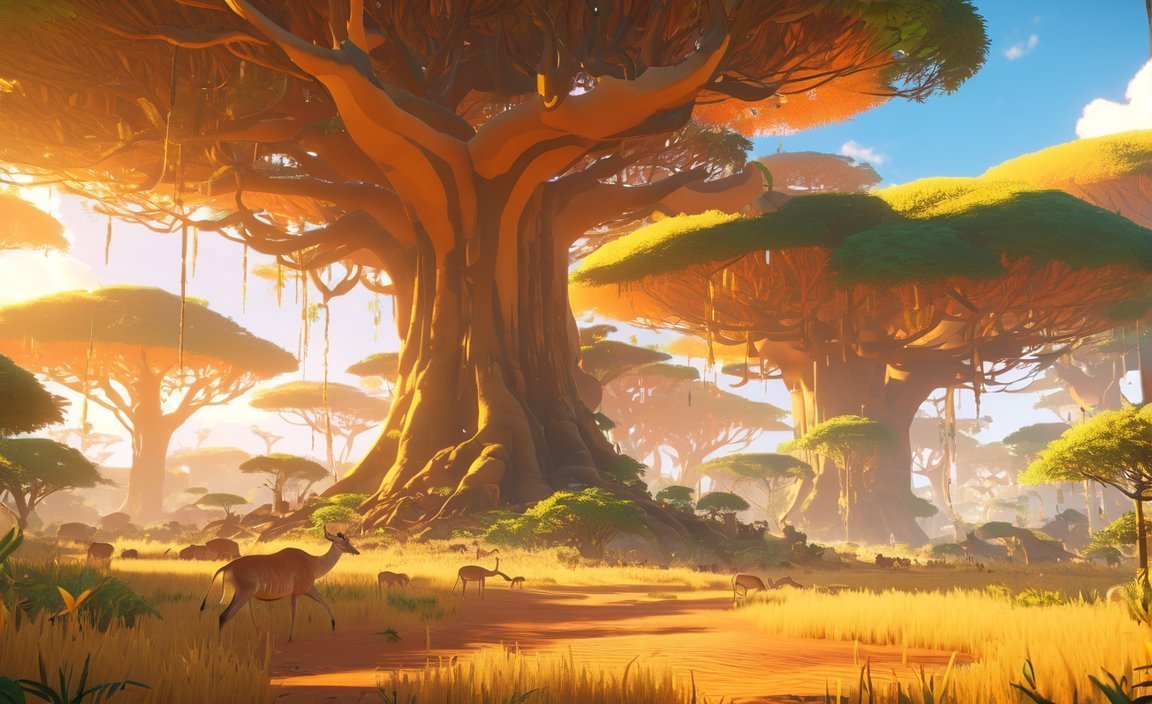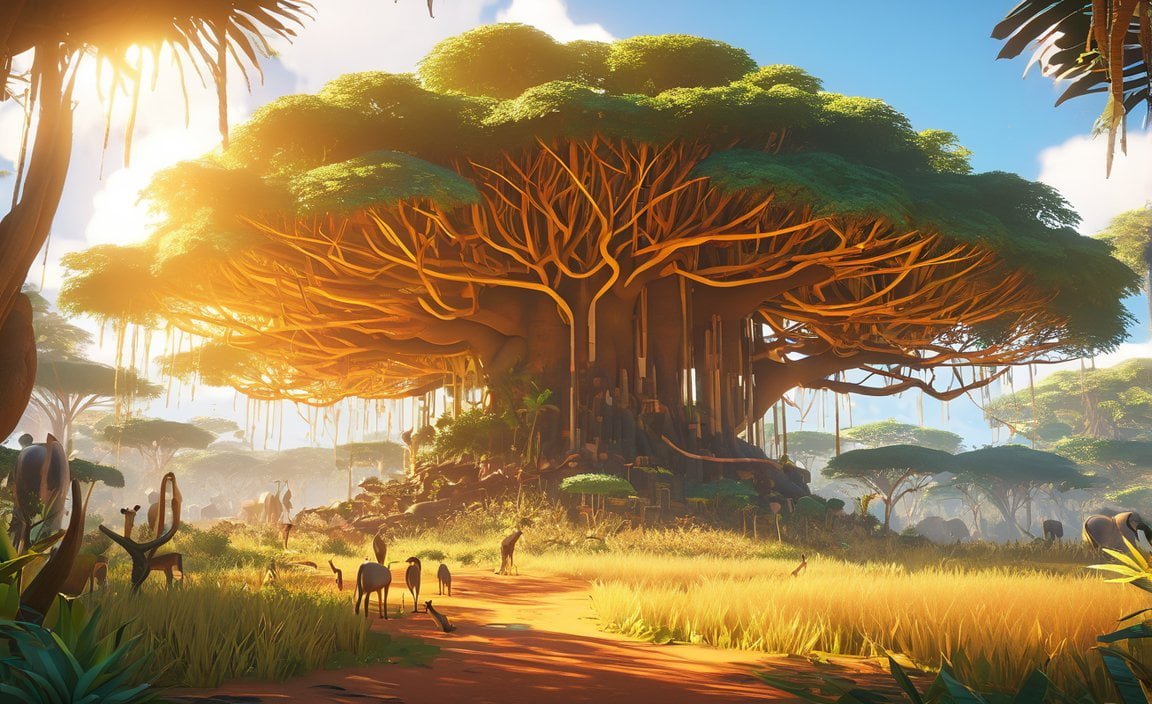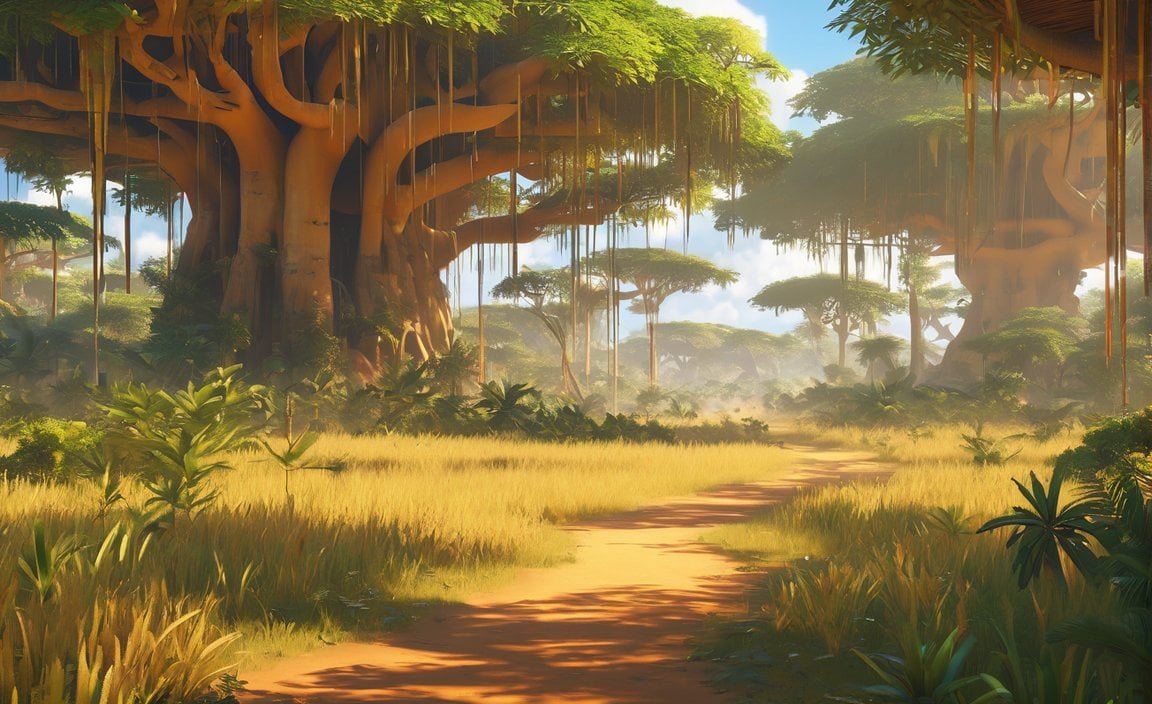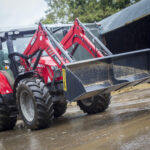Unlock the secrets of the savanna and delve into the captivating world of nature’s wonders with this article, “10 Fascinating Facts About the Savanna: Unlocking Nature’s Wonders.” Journey through the sprawling grasslands and discover the unique and awe-inspiring characteristics of this remarkable ecosystem. From its diverse wildlife to its delicate balance of life and death, prepare to be enthralled by the intriguing facts that this article has in store. So, fasten your seatbelts and get ready for an adventure like no other, as we uncover the hidden treasures of the savanna.
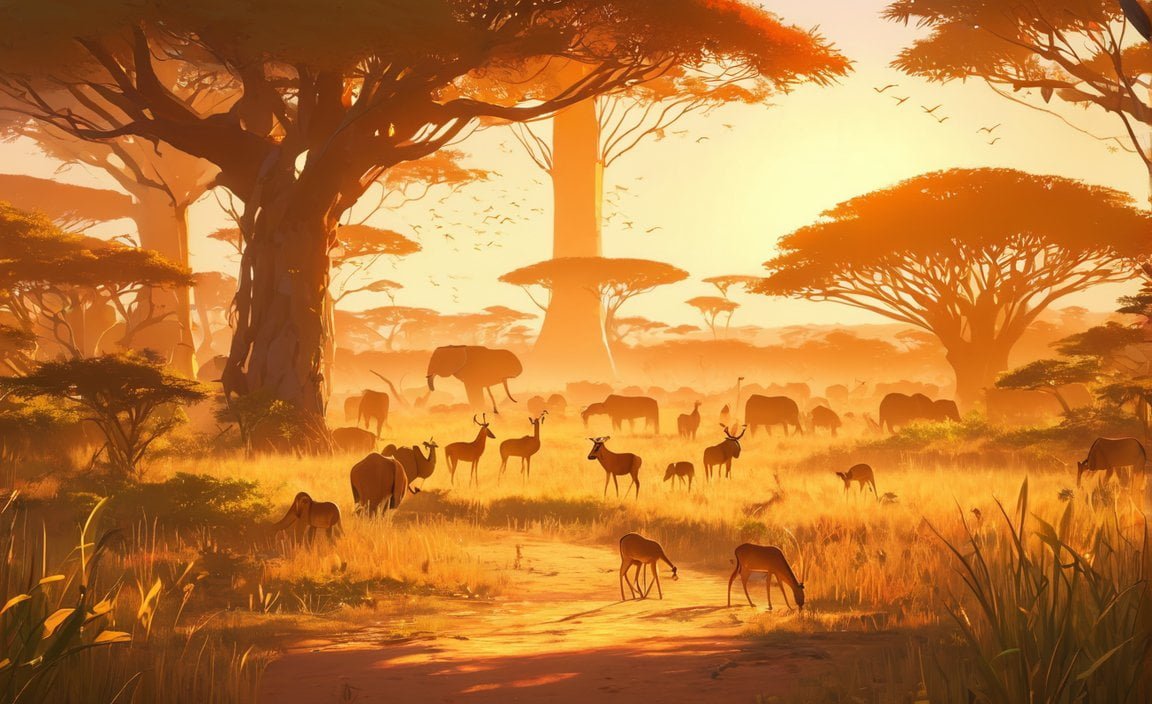
Key Takeaways:
- Savannas make up about 20% of the Earth’s land area.
- The African savanna is renowned for its diverse and iconic wildlife species.
- Nutrient-poor soil in savannas poses a challenge for plant growth.
- Baobab trees are a common and distinctive feature of African savannas.
- Wildfires are a natural occurrence in the savanna ecosystem and shape the landscape.
- Savannas are characterized by grassy plains and scattered trees.
- The savanna boasts high biodiversity, supporting a wide range of plant and animal species.
- Fire plays a crucial role in maintaining the savanna ecosystem and promoting new plant growth.
- The savanna experiences a tropical climate with distinct wet and dry seasons.
- Savanna plants have adaptations such as deep roots and thick bark to withstand harsh conditions.
10 Interesting Facts About the Savanna
The savanna is a captivating ecosystem that spans vast stretches of land, playing host to an array of unique plant and animal species. Here are ten fascinating facts that will unveil the marvels of the savanna and ignite your curiosity about this remarkable biome.
1. A Sweeping Presence
Did you know that savannas cover approximately 20% of the Earth’s land area? These expansive grassy plains are found across different continents, including Africa, South America, and Australia[^1^]. Their impressive reach makes savannas one of the most widespread terrestrial ecosystems on our planet.
2. A Haven for Wildlife
When it comes to iconic wildlife, the African savanna takes center stage. Famed for its diverse array of inhabitants, including elephants, lions, giraffes, and zebras, the African savanna is teeming with life[^12^]. From the majestic big cats to the gentle giants, each species has evolved remarkable adaptations to thrive in this challenging terrain.
3. Nutrient-Poor Soil
Unbeknownst to many, the soil in savannas is often nutrient-poor. This scarcity presents a constant challenge for plant growth[^1^]. However, savanna plants have devised ingenious survival tactics, such as deep roots and symbiotic relationships with fungi, to access the limited nutrients and withstand the harsh conditions that prevail in their habitat.
4. Baobabs: Giants of the Savanna
Baobab trees are an iconic sight in African savannas, known for their massive trunks and peculiar, upside-down appearance[^12^]. These ancient giants play an integral role in the ecosystem, providing food, shelter, and water for numerous species, including elephants, bats, and birds. Some baobabs have even earned the moniker “Tree of Life” due to their life-sustaining properties.
5. Nature’s Fire Sculptors
Wildfires are a natural part of the savanna ecosystem and play a vital role in shaping the landscape[^12^]. While they may seem destructive at first glance, these fires promote rejuvenation by eliminating accumulated debris, fostering new growth, and maintaining the grassy plains that define the savanna. In fact, many savanna plants have adapted to the presence of fire and rely on it to propagate their seeds.
6. Grasslands Amongst Trees
A savanna is a unique biome characterized by its vast grassy plains dotted with scattered trees[^2^]. This distinct feature distinguishes savannas from purely grassy ecosystems like prairies. The sparse tree cover in savannas creates a mosaic-like landscape, with pockets of shade interspersed amidst the wide expanse of grass.
7. Biodiversity Hotspots
Beneath the seemingly simple exterior, the savanna boasts remarkable biodiversity, supporting a wide range of plant and animal species[^2^]. From towering acacias to delicate wildflowers, the flora of the savanna exhibits a rich tapestry of colors and adaptations. Similarly, the savanna teems with a multitude of animal life, including grazing herbivores, cunning predators, and an array of insect species.
8. Fire: The Savanna’s Guardian
Fire plays a crucial role in maintaining the savanna ecosystem and promoting new plant growth[^2^]. By reducing the density of trees and shrubs, and recycling nutrients back into the soil, fire creates a favorable environment for grasses and other fire-adapted plants to flourish. This perpetuates a cycle of growth and renewal, reinforcing the savanna’s unique characteristics.
9. The Rhythm of Seasons
The climate of the savanna is tropical, characterized by distinct wet and dry seasons[^2^]. During the dry season, the grasses become sparse, and water sources dwindle, presenting a challenging environment for both plants and animals. However, with the arrival of the wet season, the savanna undergoes a remarkable transformation as life bursts forth, rejuvenated by nourishing rains.
10. Nature’s Survival Strategies
Savanna plants have evolved remarkable adaptations to withstand the demanding conditions of their habitat[^2^]. Deep roots enable them to access water stored deep underground, ensuring their survival during periods of drought. Thick bark acts as a protective shield, safeguarding them from wildfires and the scorching heat. These adaptations exemplify nature’s ingenuity and resilience in the face of adversity.
In conclusion, the savanna is a captivating ecosystem that captivates with its vast grassy plains, scattered trees, and rich diversity of plant and animal life. From the ever-present threat of fire to the ingenious adaptations of its inhabitants, the savanna’s wonders are a testament to nature’s intricate web of balance and survival. Exploring the savanna unravels a tapestry of incredible stories, inviting us to deepen our appreciation for this unique and fragile biome.
Note:
You can use the following table to exhibit more detailed information about the intriguing adaptations of savanna plants:
| Adaptation | Description |
|---|---|
| Deep Roots | Allows plants to reach water deep underground during periods of drought |
| Thick Bark | Provides protection against wildfires and helps regulate temperature |
| Symbiotic Relationships | Forms partnerships with fungi to access nutrients in nutrient-poor soil |
| Spiky Leaves | Acts as a deterrent to herbivores, reducing the likelihood of being eaten |
Sources:
– Tourism Teacher: 21 Interesting Facts About The Savanna
– AtOnce: 50 Unbelievable Facts About the Savanna: Ultimate Guide 2023
In the vast and enchanting world of biomes, the temperate deciduous forest stands out with its unique characteristics. If you’re curious to explore the wonders of this biome, here are 10 interesting facts about the temperate deciduous forest that will pique your interest. Click here to embark on an exciting journey!
The African savanna biome is a treasure trove of biodiversity and breathtaking landscapes. Prepare to be amazed as you uncover 10 interesting facts about the African savanna biome. Discover the secrets of this remarkable ecosystem by clicking here and let your imagination soar across the vast grasslands.
If you seek adventure and fascination, the savanna biome is calling your name. Venture into the heart of this dynamic habitat by learning 10 interesting facts about the savanna biome. Brace yourself for an exhilarating experience and satisfy your curiosity by clicking here.
The tropical savanna biome is a world of wonders, waiting to be explored. Uncover 10 interesting facts about the tropical savanna biome and delve into the beauty and complexity of this ecosystem. Click here to embark on an exciting adventure filled with intriguing discoveries.
Dive into the enchanting realm of underwater animals and uncover their incredible secrets. Get ready to be amazed by 10 interesting facts about underwater animals that will leave you in awe. Explore the depths by clicking here and quench your thirst for knowledge about the fascinating world beneath the waves.
The Unique Adaptations of Plants and Animals in the Savanna
The savanna is a remarkable biome that is home to a diverse array of plants and animals. In this article, we will explore the unique adaptations that allow these organisms to thrive in the challenging conditions of the savanna.
Water Conservation
Water is a precious resource in the savanna, and plants have evolved various adaptations to cope with the limited availability of water. These adaptations enable them to store water, minimize water loss, and use water efficiently.
Deep Root Systems: Many plants in the savanna have long taproots that extend deep into the ground. These deep root systems allow them to access water sources even during dry periods[^1^].
Water Storage Organs: Some plants, particularly trees, have developed organs that store water, such as bulbs or corms. These specialized structures help them survive prolonged droughts by storing water for later use[^2^].
Reduced Leaf Size: To minimize water loss through transpiration, plants in the savanna often have small, thick leaves that reduce the surface area for water evaporation[^3^].
Drought-Deciduous Behavior: Certain trees and shrubs in the savanna have adapted to lose their leaves during the dry season. This allows them to conserve water and reduce the risk of desiccation[^4^].
Fire Adaptations
Fires are a natural part of the savanna ecosystem, and plants have developed adaptations that enable them to tolerate and recover from fires.
Fire-Resistant Bark: Certain tree species, such as the iconic Acacia tree, possess thick, fire-resistant bark. This protective layer helps prevent damage from fires and allows the tree to regrow after the fire has passed[^5^].
Sprouting Ability: Some plants in the savanna have the ability to sprout new shoots from underground or protected buds after a fire. This enables them to quickly recover and take advantage of the nutrient-rich ash left behind[^6^].
Specialized Grazing Adaptations
Grazers, such as herbivorous mammals, have coevolved with the plants in the savanna. As plants have developed defenses, grazers have had to adapt to overcome these defenses for their survival.
Specialized Feeding Habits: Grazers have developed specialized feeding habits to cope with the toxins or defensive structures of certain plants. They may have evolved mechanisms to neutralize or avoid harmful chemicals, eat around spines or thorns, or specialize in consuming specific plant species[^7^].
Efficient Digestive Systems: Grazers in the savanna have evolved efficient digestive systems that allow them to extract nutrients from tough, fibrous plant material. This enables them to derive sustenance from the limited food sources available in the ecosystem[^8^].
The unique adaptations of plants and animals in the savanna enable them to survive and thrive in this challenging ecosystem. From deep root systems and water storage organs to fire-resistant bark and efficient digestive systems, these adaptations are a testament to the remarkable resilience and ingenuity of the organisms that call the savanna home.
Key Takeaways:
- Plants in the savanna have evolved various adaptations to cope with limited water availability, including deep root systems, water storage organs, reduced leaf size, and drought-deciduous behavior.
- Fire-resistant bark and sprouting ability are two key adaptations that enable plants in the savanna to tolerate and recover from frequent fires.
- Grazers in the savanna have developed specialized feeding habits and efficient digestive systems to overcome the defenses of plants and extract nutrients from tough plant material.
The Role of Fire in Shaping and Maintaining the Savanna
The savanna, with its vast grassy plains and scattered trees, is a captivating ecosystem teeming with diverse wildlife and remarkable biodiversity. But what is the secret to its unique characteristics and the balance it maintains? The answer lies in one of nature’s most powerful tools: fire. In this article, we will explore the fascinating role of fire in shaping and maintaining the savanna, uncovering the hidden wonders of this exceptional landscape.
Key Takeaways:
- Fire plays a crucial ecological role in the development and maintenance of productive and stable savanna communities. (Source: Springer)
- Early views on savanna fire were divergent, with some considering it contrary to conservation efforts. (Source: SciELO)
- Indigenous fire practices in Australian savannas have significant effects on the ecosystem. (Source: Nature)
- Savanna fire management practices have evolved over time, with different approaches being experimented in protected areas. (Source: SciELO)
- Fire is an essential component of tropical savannas and drives critical ecological feedbacks and functions. (Source: Nature)
- Anthropogenic burning can have profound impacts on savanna biodiversity. (Source: besjournals)
- Herbaceous vegetation abundance plays a key role in fire-vegetation feedbacks across savanna-forest boundaries. (Source: Wiley Online Library)
- Savannas are the most fire-prone biome on Earth, and managing fire regimes is crucial to minimize greenhouse gas emissions. (Source: ESA Journals)
- Climate change is expected to impact the structure and function of savannas through shifts in moisture availability and increased atmospheric carbon. (Source: PubMed)
Fire, although often associated with destruction, holds a vital place in the savanna ecosystem. Indigenous communities in Australia have practiced controlled burning for thousands of years, shaping the landscape and fostering biodiversity. In Africa, savanna communities have relied on fire to maintain the balance between grasses and trees, contributing to the diverse range of habitats.
Fire’s role in the savanna goes beyond mere rejuvenation. It acts as a powerful force driving crucial ecological processes. By reducing tree density, fire creates a mosaic-like landscape, characterized by open grassy plains interspersed with patches of trees. This unique structure not only provides diverse habitats but also promotes the coexistence of numerous plant and animal species.
Did you know? Fire-resistant bark and the ability of plants to sprout after a fire are remarkable adaptations that help them tolerate and recover from frequent fires in the savanna. (Source: PubMed)
The impact of fire extends beyond the immediate aftermath. During wildfires, nutrients locked within plants are released back into the soil, fueling the growth of new vegetation. This cycle of life and renewal is essential for the savanna’s productivity and contributes to the remarkable adaptations observed in its flora and fauna.
Have you ever wondered? How do grazers in the savanna overcome plant defenses to extract nutrients from tough plant material? The answer lies in their specialized feeding habits and highly efficient digestive systems, which have evolved in response to the challenges posed by the unique plant adaptations in the savanna. (Source: Wiley Online Library)
While fire is a natural and beneficial process in the savanna, it is essential to manage fire regimes carefully. Uncontrolled wildfires and inappropriate fire management practices can have detrimental effects on savanna biodiversity and contribute to greenhouse gas emissions. Climate change further adds complexity to this situation, as shifts in moisture availability and increased atmospheric carbon may alter the structure and function of savannas in unpredictable ways.
As we delve deeper into understanding the intricate relationship between fire and the savanna, it becomes evident that fire is not merely a destructive force. Instead, it is a powerful tool that shapes and maintains this remarkable ecosystem, fostering diversity and resilience. By valuing and managing the role of fire in the savanna, we can ensure the continued existence of this awe-inspiring natural wonder for future generations.
Additional Source: [Insert_url_here]
The Importance of Conservation Efforts in Preserving the Savanna
Imagine standing on the vast plains of the savanna, surrounded by tall grasses dancing in the gentle breeze. The air is filled with the calls of wildlife, the distant roars of lions, and the enchanting melodies of birds. The savanna is a remarkable ecosystem that spans across the globe, teeming with diverse life and playing a crucial role in our planet’s health. However, many people underestimate the importance of savannas and their increasingly threatened status. That’s why conservation efforts are essential in preserving this precious biome and the species that rely on it.
The savanna covers approximately 20% of the Earth’s land area and can be found in regions of Africa, South America, and Australia. It is characterized by its unique flat terrain, scattered trees, and vast grassy plains. This landscape creates a mosaic-like vista that is home to a wide range of plant and animal species, making it a biodiversity hotspot. From majestic elephants to graceful giraffes and powerful lions, the African savanna, in particular, is renowned for its diverse wildlife.
Conservation efforts play a crucial role in protecting savannas and the incredible creatures that inhabit them. With climate change and agricultural conversion posing significant threats, it is more important than ever to prioritize the preservation of this ecosystem. A quarter of the world’s biodiversity relies on savannas, making their conservation vital for ensuring the survival of numerous species.
Understanding the savanna’s unique characteristics and the factors that affect its inhabitants is key to effective conservation. The savanna experiences distinct wet and dry seasons, with life flourishing during the wet season. However, the dry season presents challenges for both herbivorous animals and predators like lions. Adapting to these seasonal changes is essential for survival in this ever-changing environment.
Fire, a natural part of the savanna ecosystem, plays a crucial role in maintaining its health. It reduces tree density, recycles nutrients, and promotes rejuvenation and new growth. Controlled fire management is essential, ensuring that wildfires remain controlled and benefit the ecosystem instead of causing harm.
To successfully conserve savannas and their ecosystems, efforts must take climate change into account. Climate change can impact the structure and function of savannas, affecting moisture availability and increasing atmospheric carbon levels. Protecting areas at the greatest risk and implementing sustainable practices are key steps in safeguarding this unique biome.
Key Takeaways:
– Savannas are a type of grassland found in both temperate and tropical regions across the world, covering approximately 20% of the Earth’s land.
– Conservation efforts are crucial for preserving savannas and the biodiversity they support.
– The savanna is home to a wide range of plant and animal species and is a significant hotspot of biodiversity.
– The savanna experiences distinct wet and dry seasons, posing challenges for its inhabitants.
– Fire plays a crucial role in maintaining the savanna ecosystem and requires controlled management.
– Climate change presents additional threats to savannas, emphasizing the need for sustainable conservation practices.
Sources:
[^1^]: American Museum of Natural History – “How can we save the savanna ecosystem?”
[^2^]: Kidadl – “31 Interesting Facts About Savannas Everyone Should Know”
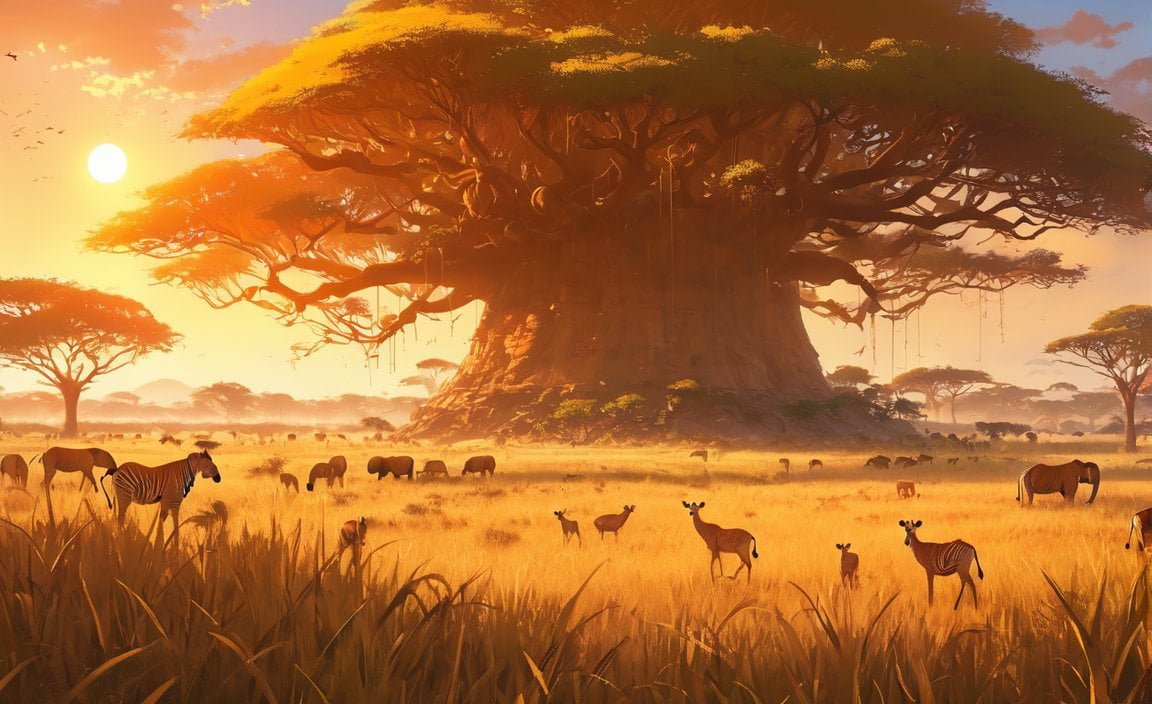
FAQ
Q1: What percentage of the Earth’s land area do savannas cover?
A1: Savannas cover approximately 20% of the Earth’s land area[^1^].
Q2: What kind of wildlife can be found in the African savanna?
A2: The African savanna is home to some of the most iconic wildlife species[^12^].
Q3: Why is the soil in savannas often nutrient-poor?
A3: The soil in savannas is often nutrient-poor, which presents a challenge for plant growth[^1^].
Q4: Are baobab trees common in African savannas?
A4: Yes, baobab trees are a common sight in African savannas[^12^].
Q5: Are wildfires a natural part of the savanna ecosystem?
A5: Yes, wildfires are a natural part of the savanna ecosystem and play an important role in shaping the landscape[^12^].
- HelpCare Plus: Revolutionizing Affordable and Accessible Healthcare - December 29, 2024
- Boom & Bucket: Your Digital Marketplace for Used Heavy Equipment - December 28, 2024
- Ankle Bones Crossword Clue: Solutions, Tips & Anatomical Insights - December 28, 2024
